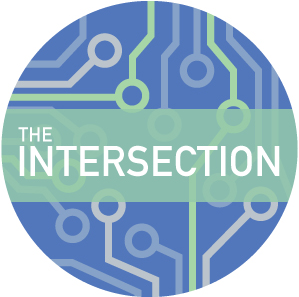 The rise of data has opened new doors for government agencies. Increasingly, agencies are collecting, analyzing and using historical facts and trends to improve their current policies.
The rise of data has opened new doors for government agencies. Increasingly, agencies are collecting, analyzing and using historical facts and trends to improve their current policies.
This data-driven method of decision-making offers serious benefits to agencies. For one, an emphasis on data in policy can help to balance the sometimes negative influences of partisanship. These practices have also helped agencies to engineer more precise solutions with greater responsiveness to changes. Finally, data is helping to encourage more collaboration, not only within agencies, but also between citizens and government officials.
Naturally, increased use of data has not come without consequences. Many agencies are still struggling to adjust to the new challenges posed by the incorporation of data. For some, acquiring the appropriate technology to support data-driven decisions has been a major hold up, and training current staff to utilize the new techniques can be a difficult feat as well.
Regardless of the associated challenges, support for a data-driven approach to policymaking is widespread. At the Data in Action Conference hosted by NextGov and Dun&Bradstreet, a panel of four prominent government tech leaders discussed the evolution of data at agencies. Their discourse hit on some of the greatest challenges posed by the rise of data for government and offered steps to counter these difficulties. Here are five of the most important tasks to consider as your agency seeks to better incorporate data into the decision-making process.
- How should my agency decide which data-driven goals to pursue?
Prioritizing what is most important for an agency can be very difficult because so many stakeholders have different opinions. The best way to move forward is to strive to establish a balance between the agency mission and the desires of citizens. “The public will indicate what data they think is of value,” said David Bray, Chief Information Officer at the Federal Communications Commission. Then, it is just a matter of determining where agency goals match up.
- How can agencies figure out what data to make public?
When deciding what to publicize, context is key for government agencies. All four experts agreed that a mass release of data without informing citizens about the processes used either to obtain or analyze the data is a mistake. Robin Thottungal, Chief Data Scientist at the Environmental Protection Agency, emphasized that agencies must educate the public so that individuals can see how the agency used available data to reach its conclusions. But while open data must be responsibly released, participants cautioned against too much filtering. “Innovation is about diversity of thought,” said Natalie Evans Harris, Senior Policy Advisor on Data-Driven Government at the White House Office of Science and Technology Policy. She stressed that data releases should, “enable individuals to engage.”
- How can I guarantee that my agency is using the best available tools?
It may be tempting for IT departments to build custom solutions in-house, but this is not the best use of resources. Jeff Chen, Chief Data Scientist at the Department of Commerce, emphasized that the private sector should be used as a great resource for insight. By partnering with industry, agencies can “help build better analytical tools, better systems, [and] really take advantage of federal data and take it to the next level,” Chen said. Ideally, agency leadership should be willing to take the necessary risks to innovate in partnership with private experts, Thottungal said.
- How can internal agency leadership functions be improved?
A critical first step, according to Bray, is to liberate data not only to citizens but also within the agency. There is no reason to limit data analysis to those with classical training in technology or data. “In my mind, everyone in government is in the business of data, so aren’t we all data folks,” Harris noted. A great way to help begin this process is to unite the C-suite employees. Traditionally the CIO is responsible for keeping the programs running and secure while the data officer has the flexibility to explore and experiment. But this distinction should be narrowed, and there should be greater ongoing collaboration between the teams. Hand in hand with this change is the opportunity to build trust between the executives, Chen said.
- What are the next steps for collaboration between agencies?
In order to facilitate better interagency collaboration, agencies should consider using platforms that can be accessed by multiple different groups, Thottungal said. The EPA, for example, has already begun projects that help this kind of collaboration occur between the EPA and other groups, such as NASA, National Oceanic and Atmospheric Administration (NOAA) and others. This kind of crossover will be critical, because as Bray pointed out, “the world we are in does not necessarily fall into those different divisions and agencies and departments.”
The White House is also working to facilitate collaboration among members of the Data Cabinet, which began meeting monthly in January 2016. Originally uniting 30 federal data leaders, the group has grown to include about 70 members from a variety of communities — even beyond government. Their problem-solving focus centers on three areas in particular: data talent challenges, data governance challenges and helping non-data people get involved.
The shift toward adopting data as a critical component in government decision-making is now in full force. Agencies at the local, state and federal levels have already begun the transition, and their experiences will be highly useful to help improve data-driven government in the future.
Has your agency faced these challenges (or others) as you’ve increased your reliance on data? Share your difficulties, insights and advice in the comments below!




Leave a Reply
You must be logged in to post a comment.